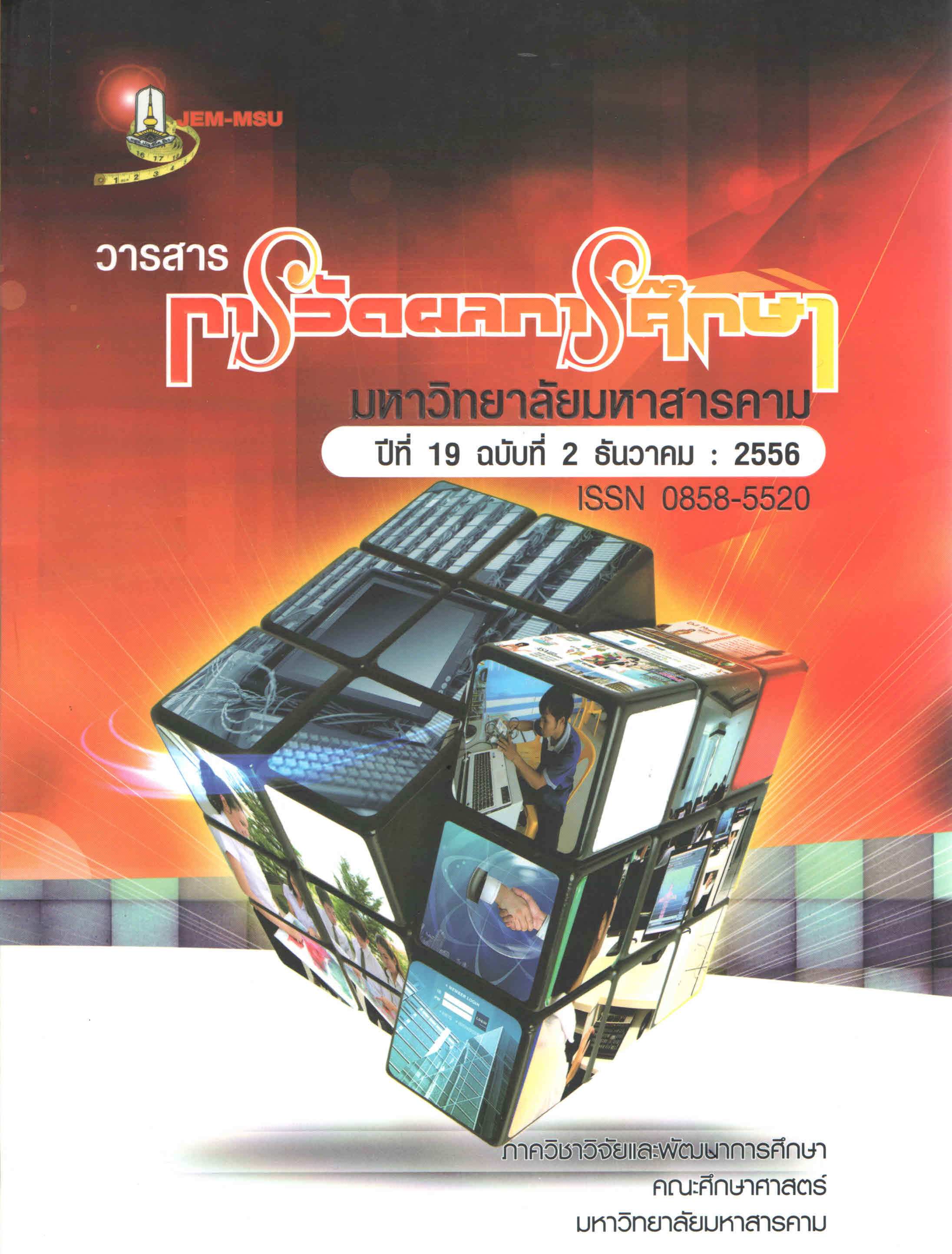The Development of Instructional Leadership Indicators for Early Childhood Teachers Under The Primary Education Service Area Office in the Northeast Thailand
Main Article Content
Abstract
The purposes of this research were : (1) to develop of instructional leadership indicators
for early childhood teachers under the primary education service area office in the northeast
thailand, and (2) to examine the goodness of fit of the structural model of confirmatory factor
analysis with the empirical data. Two phases for research : phase I was the development of
instructional leadership indicators for early childhood teachers indicators by theoretical
documentary analysis, expert interview and case study for creating conceptual framework, drafting
indicators, and verifying the context validity, phase II was the examination of the goodness of fit of
the structural model by quantitative research methodology and collected data were analyzed by
computer programs (Spss for Windows and LISREL for Windows 8.72). Data collection tool were a
five-level rating scale questionnaire with validity ranging (Index of Item Objective Congruence / IOC)
between 0.55 to 1.00 discrimination power values (Item total Correlation Coefficient) were
between 0.05-0.86,its reliability coefficient (Alpha Coefficient) was 0.82 from 580 master teachers
samples in the primary education service area office in the northeast Thailand.
The findings were as follows :
1. The research of the development indicators appeared that : in which 3 major
factors, 11 sub factors, 68 indicators of instructional leadership indicators. Sixty – eight indicators
of instructional leadership indicators : in which 14 indicators for management curriculum and
early learning,26 indicators for the development of early childhood teachers, and 28 indicators
for the development of early childhood, in accordance to related principles, perspectives, and
theories.
2. The goodness of fit of structural equation model showed its consistency with the
empirical data (Chi-square = 1.25, degree of freedom (df) = 4, P-value = .869, goodness-of-fit index
(GFI) =1.00, adjust-goodness-of-fit index (AGFI) = .99, and root mean square error of approximation
(RMSEA) =0.000). Statistical analysis results confirmed the research hypotheses
Article Details
The content and information contained in the published article in the Journal of Educational Measurement Mahasarakham University represent the opinions and responsibilities of the authors directly. The editorial board of the journal is not necessarily in agreement with or responsible for any of the content.
The articles, data, content, images, etc. that have been published in the Journal of Educational Measurement Mahasarakham University are copyrighted by the journal. If any individual or organization wishes to reproduce or perform any actions involving the entirety or any part of the content, they must obtain written permission from the Journal of Educational Measurement Mahasarakham University.


